The Year 2022 in Review
Speech and Audio News
 Last year Karolin Krüger joint as a new member in the speech and audio team. She started as a Phd student in the middle of the year and is also focusing on medical topics. Therefore, she added a tool for objective speech analysis to our framework KiRAT that should support speech therapists and medical doctors in evaluation speech quality. In addition, she began developing a second tool for speech training via games. The control of the game is implemented through voice: The extracted speech features can be used to control the game in real-time. This approach could support, for example, people suffering from Parkinson´s disease with voice and speech disorders. Due to symptoms like harshness and breathiness of the voice, as well as a decrease of the modulation abilities in tempo, pitch and loudness, communication and social interaction becomes more difficult. Patients suffer from this restriction and may withdraw socially. Speech therapists can help increasing speech quality and regaining confidence. By offering additional possibilities for speech training at home in cooperation with speech therapists, results could be improved and thus increase the quality of life. Analyzing speech in an objective and repeatable way enables monitoring the course of therapy and could give more information for treating voice and speech disorders. In addition, this might even enable early diagnosis of Parkinson´s disease, as changes in voice and speech are often an early symptom of the disease.
Last year Karolin Krüger joint as a new member in the speech and audio team. She started as a Phd student in the middle of the year and is also focusing on medical topics. Therefore, she added a tool for objective speech analysis to our framework KiRAT that should support speech therapists and medical doctors in evaluation speech quality. In addition, she began developing a second tool for speech training via games. The control of the game is implemented through voice: The extracted speech features can be used to control the game in real-time. This approach could support, for example, people suffering from Parkinson´s disease with voice and speech disorders. Due to symptoms like harshness and breathiness of the voice, as well as a decrease of the modulation abilities in tempo, pitch and loudness, communication and social interaction becomes more difficult. Patients suffer from this restriction and may withdraw socially. Speech therapists can help increasing speech quality and regaining confidence. By offering additional possibilities for speech training at home in cooperation with speech therapists, results could be improved and thus increase the quality of life. Analyzing speech in an objective and repeatable way enables monitoring the course of therapy and could give more information for treating voice and speech disorders. In addition, this might even enable early diagnosis of Parkinson´s disease, as changes in voice and speech are often an early symptom of the disease.
Regarding speech enhancement for in-car communication systems (ICC), the simplified rules approach for estimating head orientation has been further extended in KiRAT to provide more accurate instantaneous estimations. Efforts are currently ongoing to address real-time compensation of the head rotation degradation impact on speech quality using these instantaneous estimates.
Regarding enhancing the observed speech signal through the beamforming approach, an adaptive beamformer algorithm has been implemented in a generalized sidelobe canceller structure (GSC) with an adaptive blocking matrix. Our automotive noise and impulse responses (ANIR) corpus has been utilized during the implementation and evaluation of the beamformer algorithm. Efforts are continuously underway to further enhance the beamformer's performance by combining only the appropriate microphone signals relative to the speaker's head rotation to maximize the speech quality.
Medical News
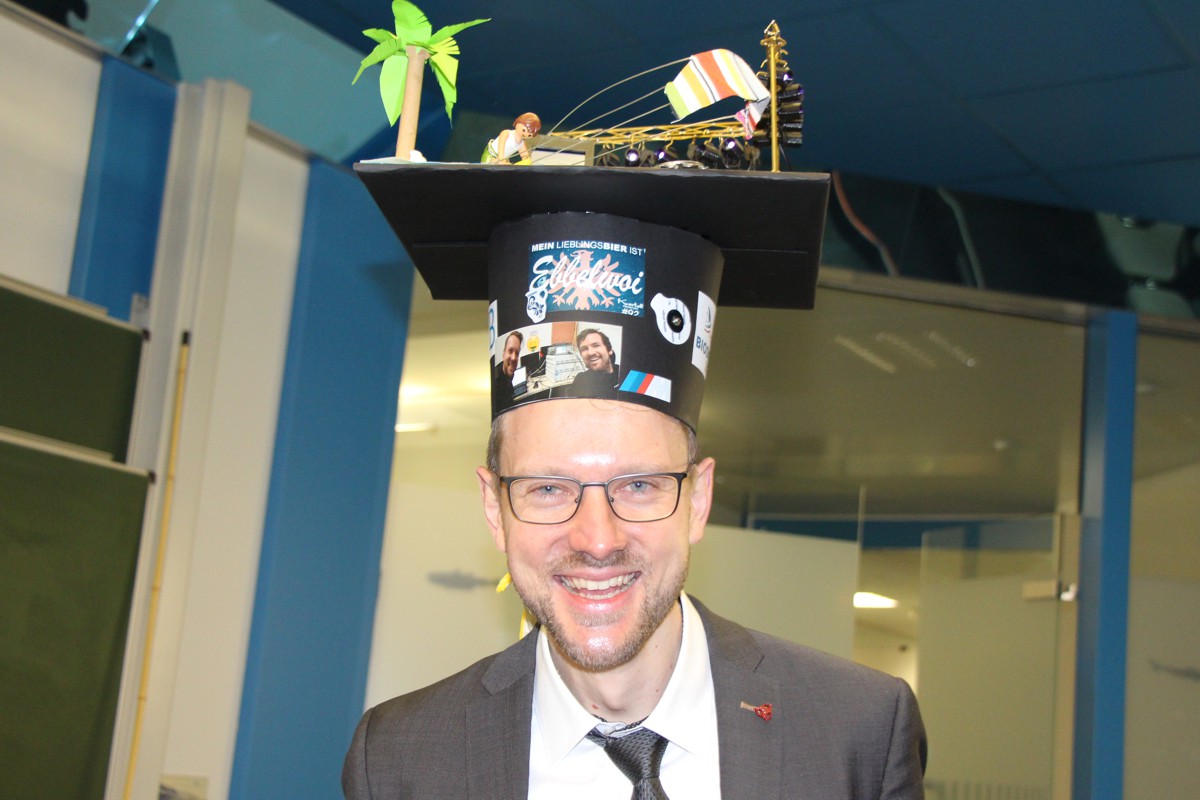 The medical team made some great progress on their own PhD theses and for the whole team during the last year.
The medical team made some great progress on their own PhD theses and for the whole team during the last year.
Eric successfully defended his Ph.D. thesis, "Analysis of Stimulation-Evoked Muscle and Nerve Signals using Electrical and Magnetic Sensing" in early 2022. He faced tough questions from a panel of five investigators (Gerhard Schmidt, Helmut Laufs, Daniel Baumgarten, Michael Höft, and Eckhard Quandt). The questions were excellently answered. Thus, he finished with distinction. Eric is working on the quantitative characterization of magnetoelectric (ME) sensors. This topic is addressed within the Collaborative Research Center (CRC) 1261. It represents a central project where Eric supports numerous sensor projects to address a translation of ME sensor concepts for clinical application and to derive necessary optimizations based on empirical experiments.
Furthermore, Eric submitted another journal article, "Investigation of Converse Magnetoelectric Thin Film Sensors for Magnetocardiography" in IEEE Sensors in the latter half of 2022, with multiple co-authors. This article highlights the development of an ME sensor for magnetocardiography (MCG) using a proof-of-concept study with a healthy subject in a magnetically shielded chamber. For the first time, a converse magnetoelectric thin-film sensor was used for assessment.
In the field of localization of the magnetoelectric sensors, we were able to win Prof. Dr. Robert Bergholz as a cooperation partner. Prof. Bergholz is head of the pediatric surgery at UKSH-Kiel. During an ultrasound examination, the attending physician must mark the position (and orientation) of the ultrasound probe by hand in a 2D pictogram. This is time-consuming in everyday clinical practice and can lead to errors. For this reason, the setup for magnetic localization has now been slightly adapted so that the ultrasound probe is automatically tracked in position and orientation during the examination. For this purpose, a magnetic sensor is attached to the ultrasound probe.
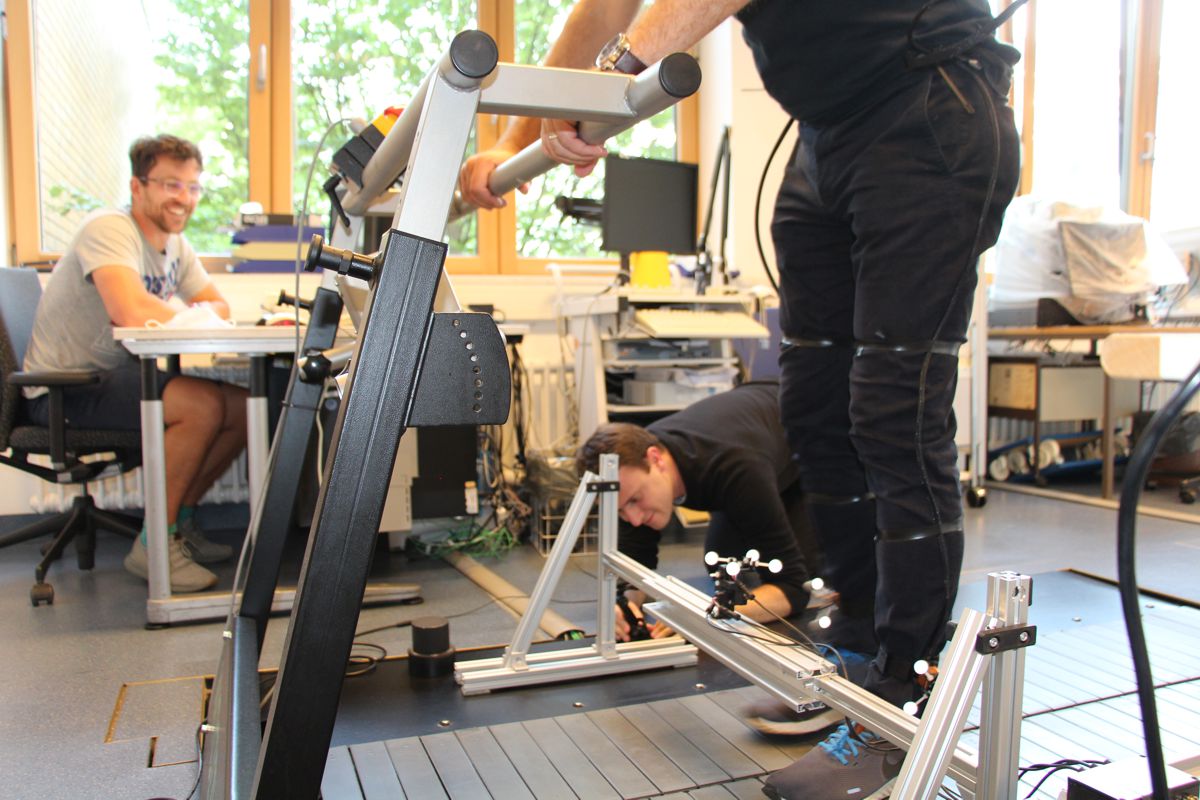 Johannes has been working on the magnetic analysis of human movements at the chair since summer 2020 as part of the Collaborative Research Center 1261. Together with our cooperation partners from neurogeriatrics, he has been working on an experimental setup in software and hardware for the last 12 months. The basic idea of this setup is a network of linked magnetic sources and sensors. The measured signals will then be used to determine the relative position of the objects to each other. A promising application scenario is the detection of step width/length as it is interesting in the medical context for Parkinson's diagnostics. Johannes presented the theoretical basis for this at the BMT in Innsbruck at the end of September. The first measurements were also carried out in September in the motor laboratory of the UKSH.
Johannes has been working on the magnetic analysis of human movements at the chair since summer 2020 as part of the Collaborative Research Center 1261. Together with our cooperation partners from neurogeriatrics, he has been working on an experimental setup in software and hardware for the last 12 months. The basic idea of this setup is a network of linked magnetic sources and sensors. The measured signals will then be used to determine the relative position of the objects to each other. A promising application scenario is the detection of step width/length as it is interesting in the medical context for Parkinson's diagnostics. Johannes presented the theoretical basis for this at the BMT in Innsbruck at the end of September. The first measurements were also carried out in September in the motor laboratory of the UKSH.
This year, Erik worked on the question of how we can evaluate the suitability of different magnetic sensors for cardiological applications. We presented our results at the BMT 2022 in Innsbruck. We have also started to build an open MKG database (https://biomagnetic-sensing.de/index.php/data-bases/datasets/kiel-cardio-database). In the field of non-invasive current density estimation, our model has been extended by the use of all-pass filters, which allows us to optimize the propagation velocity of the action potential in the heart using a gradient method and given measurement series.
Patricia has continued to work on the classification of different tremor disorders this year, focusing on basic features. The regularity, i.e. how stable the frequency of the tremor is over time, is used in the literature to distinguish between different diseases by considering the tremor as a symptom. Patricia has spent half a year studying how this feature is related to other features such as amplitude and frequency. The results will be summarised in two papers next year. In the summer, Patricia became a mother and therefore spent the second half of the year on parental leave.
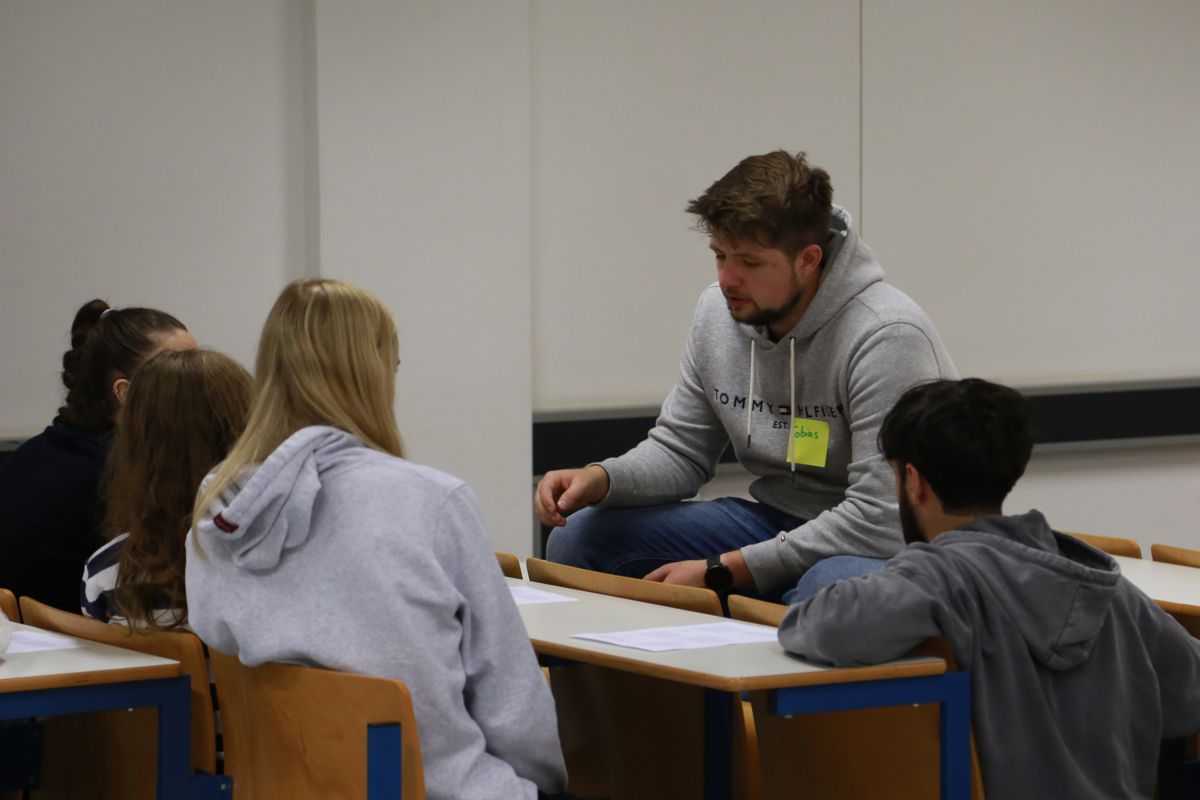 Robbin continued with his gait events detection algorithm based on a convolutional neural network. In the first half of the year, the neural network was tested on a lab-based dataset where reference timings from an optoelectronic stereophotogrammetric system was available. Thereafter, the network was tested on an independent dataset from the Mobilise-D consortium where data were collected in the habitual environment (e.g., home, work), and its ecological validity was proven. Robbin has now drafted his thesis and is finishing at the beginning of this year.
Robbin continued with his gait events detection algorithm based on a convolutional neural network. In the first half of the year, the neural network was tested on a lab-based dataset where reference timings from an optoelectronic stereophotogrammetric system was available. Thereafter, the network was tested on an independent dataset from the Mobilise-D consortium where data were collected in the habitual environment (e.g., home, work), and its ecological validity was proven. Robbin has now drafted his thesis and is finishing at the beginning of this year.
Tobias started his PhD at the chair this year in June. In the first months he has been working on magnetic motion analysis. The goal of his doctorate is to develop a motion capture glove. This project will be worked on in cooperation with Prof. Dr. Robert Bergholz from the UKSH in Kiel. In the future, the glove will be used in robot-assisted surgery, for example in so-called Da Vinci operating systems. Tobias also has a half-time position in Outreach and had a project day at the Faculty of Technology in September, where he worked on cardiological signals together with a school class. The goal was to give the students input for their following profile seminar.
SONAR News
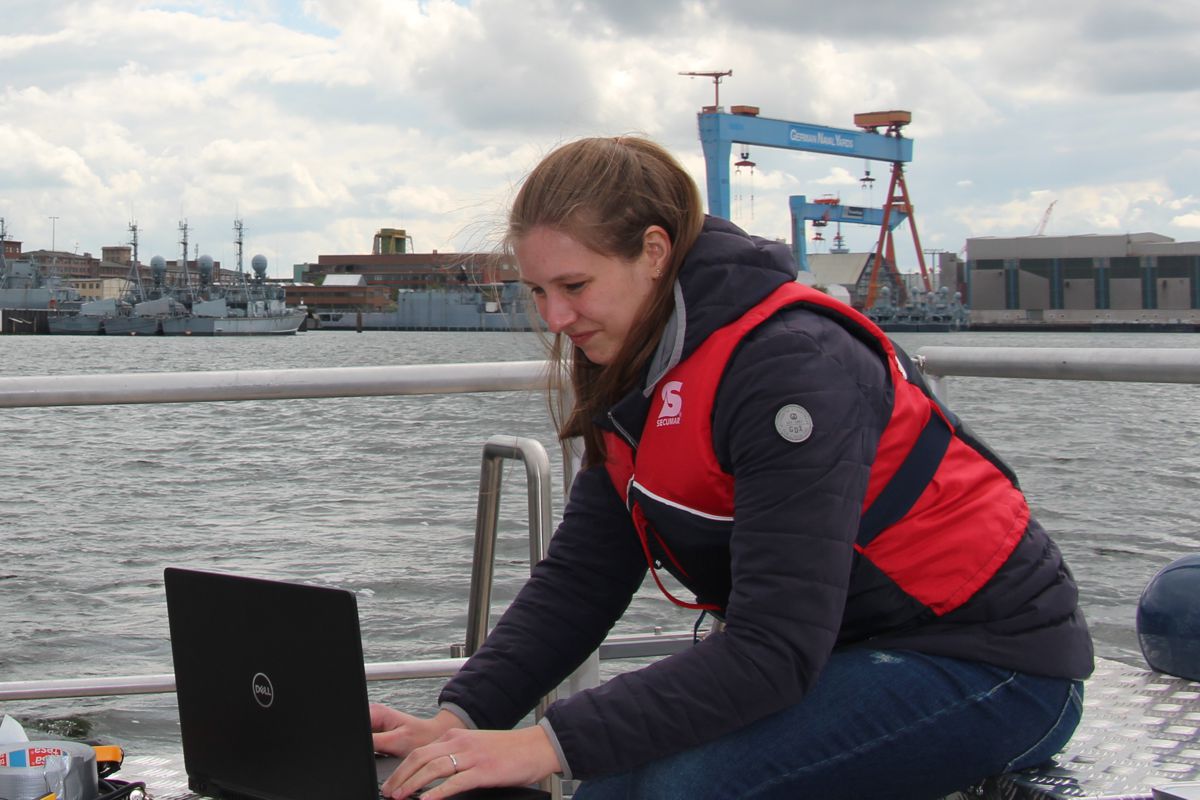 There have been personnel changes in the underwater sector. We were able to inspire Christian Kanarski and Karoline Gussow to join us as new PhD students.
There have been personnel changes in the underwater sector. We were able to inspire Christian Kanarski and Karoline Gussow to join us as new PhD students.
Christian has extended the environmental simulation of the real-time signal processing framework KiRAT to include acoustic bubble targets for modelling so-called "methane gas flares".
A methane gas flare results from the interconnection of many individual methane gas bubbles that interact with each other as well as with their environment. The acoustic bubble targets each have their own frequency response and can both passively interact with sound waves and actively operate as oscillating sound sources. Thus, methane gas flares can be realistically represented in the environmental simulation.
The goal of his work is to enable the accurate classification of methane gas flares in the ocean. Therefore, he will extend the existing MIMO SONAR system to include three-dimensional transmit and receive signal processing in areas such as beamforming, matched filtering and adaptive Doppler analysis. This will enable, among other things, the classification of bubble velocities. On the other hand, the SONAR system is to be extended to include robust, adaptive and autonomous control by an artificial intelligence: A reinforcement learning agent shall autonomously learn the interrelation between the set SONAR system parameterisation and the resulting SONAR observation in the existing environment simulation, by randomly exploring and exploiting the learned information. This is to enable optimal detection of methane gas bubbles and flares in the presence of disturbance sources (e.g. ocean noise, fish), through the learned control of the MIMO SONAR system.
Karoline has just started and is initially working on underwater transducer characterization. Later, she expects to set up a real-time multi-channel SONAR system.
 In addition, measurements could be carried out under adverse conditions at the end of November 2021. The small towed body "cigar" was also tried out for the first time and data was collected. Thus, the first tests with thin-film sensors under the influence of water flows around them could be carried out, although they still need to be analyzed. In addition, the first practical measurements were carried out with distributed systems to test multistatic MIMO SONAR. Further measurements were carried out in communications and an underwater communication over the largest distance to date was successfully accomplished. However, a warmer date is definitely being targeted for the next measurement.
In addition, measurements could be carried out under adverse conditions at the end of November 2021. The small towed body "cigar" was also tried out for the first time and data was collected. Thus, the first tests with thin-film sensors under the influence of water flows around them could be carried out, although they still need to be analyzed. In addition, the first practical measurements were carried out with distributed systems to test multistatic MIMO SONAR. Further measurements were carried out in communications and an underwater communication over the largest distance to date was successfully accomplished. However, a warmer date is definitely being targeted for the next measurement.
The "cigar" is now also the subject of a DFG-funded program to promote young female researchers in the early stages of their careers (i.e. "studies"). Five female students are now working on integrating magnetic sensors from the SFB 1261 into the cigar and to use them to locate old munitions on or in the seabed. They have started at the beginning of this year and so far the project is making good progress.
We have also been able to increase our hardware inventory. In addition to two new projectors from Benthowave, which are specially designed for lower frequencies, we were kindly provided with two reference hydrophones with associated charge amplifiers from the University of Bochum. Many thanks again at this point!
Last but not least, we used the winter break to improve the software side. This year, the SONAR system was fundamentally overhauled to enable the use of distributed and networked arrays. For this purpose, the performance was significantly increased. In addition, the simulation was made faster and new functions were added. It is now possible to simulate walls as well as bubble columns with several hundred objects, which significantly increases the realism of the digital ocean.
Outreach
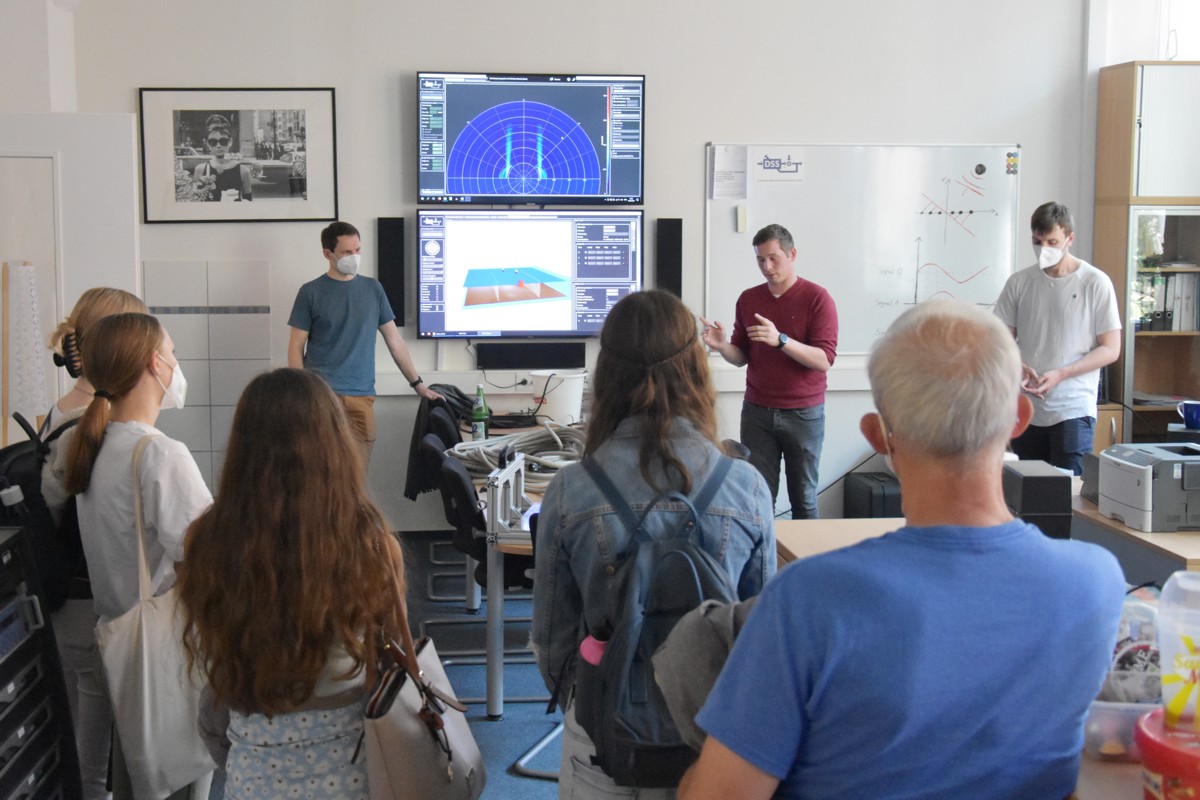 In order to increase and improve our outreach activities, we were able to get an extra "position" for this topic. Tobias has started in 2022 - 50 percent of his work will be related to research (on magnetic sources and related localisation approaches) and the other 50 percent will be related to outreach. In this area, we had our first lab day for school students at the institute and we organised the "open lab day" - an event especially tailored for school students to show the research and education "highlights" of our faculty.
In order to increase and improve our outreach activities, we were able to get an extra "position" for this topic. Tobias has started in 2022 - 50 percent of his work will be related to research (on magnetic sources and related localisation approaches) and the other 50 percent will be related to outreach. In this area, we had our first lab day for school students at the institute and we organised the "open lab day" - an event especially tailored for school students to show the research and education "highlights" of our faculty.
Some Numbers
-
This year the number of publications was just the same as in 2021 - we published five journals and eleven conference papers.
-
Comparted to 2021 we were agian able (as last year) to increase the number of bachelor and master theses. 13 theses were started in 2022: four bachelor theses and nine master theses.
-
In terms of doctoral degrees we "extended the name" of three people. Beside Eric Elzenheimer, who was already mentioned above, Simon Graf and Michael Brodersen sucessfully defended their research in 2022. Congratulations (again) to all three of them.
Our "GaS Club"
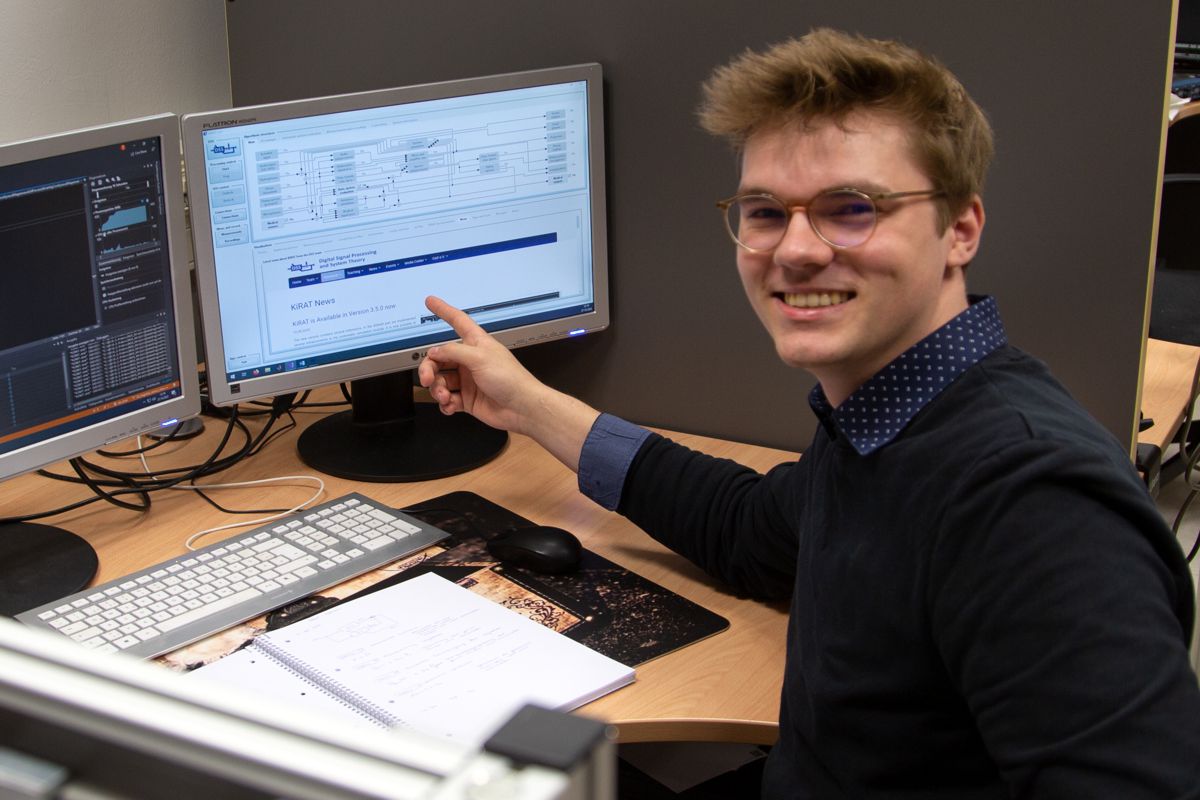 The "Gesellschaft für angewandte Signalverarbeitung" (GAS) currently have 43 supporting members and two companies.
The "Gesellschaft für angewandte Signalverarbeitung" (GAS) currently have 43 supporting members and two companies.
The society annually awards the best thesis in the field of digital signal processing and system theory. Particular attention is paid to scientific and technical claim and the practical relevance of the work. The complete DSS-Group evaluates the student’s commitment, their ability to work multidisciplinary and in a team. Tjorben Lerg got the prize with his bachelor thesis “3D Measurement of Magnetic Sensors“. More information can be found here (the GaS club has it s own website now).
We look forward to seeing you again at our in-person general meeting. We can't wait to see you and catch up everything that's been happening in the meantime.
Some Pictures from 2022
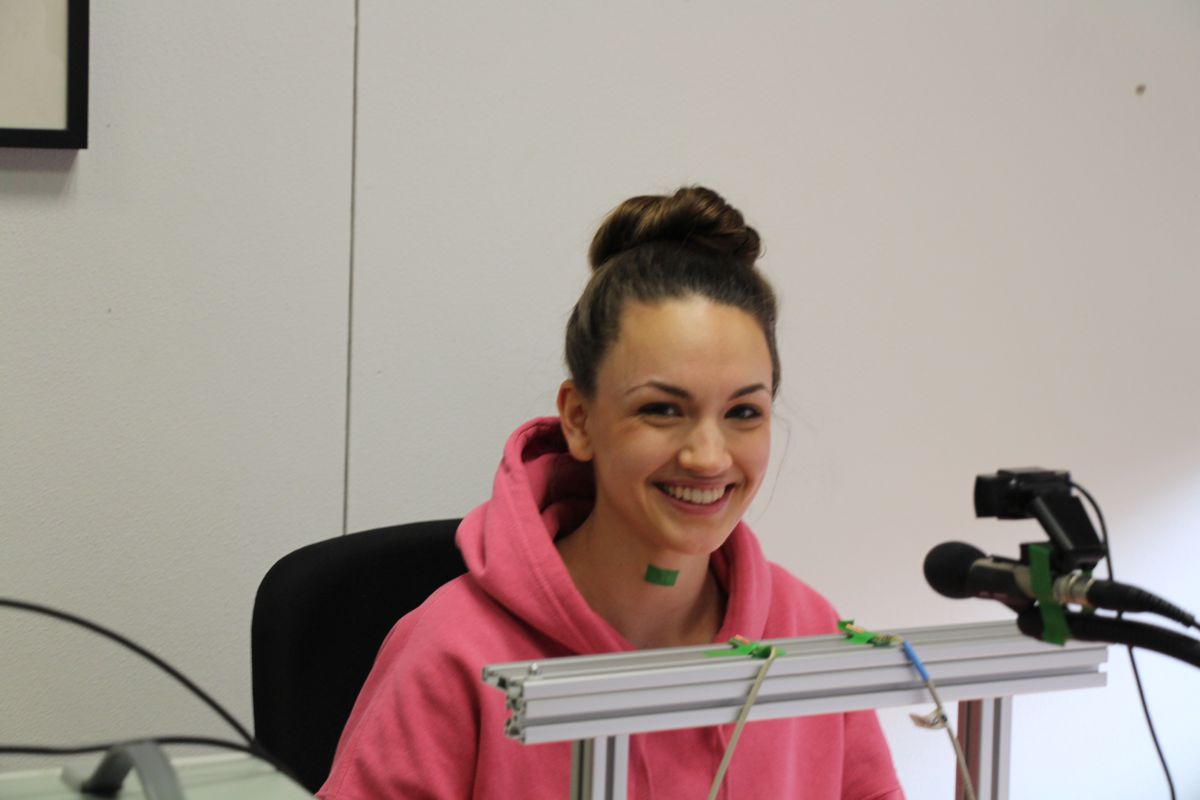 |
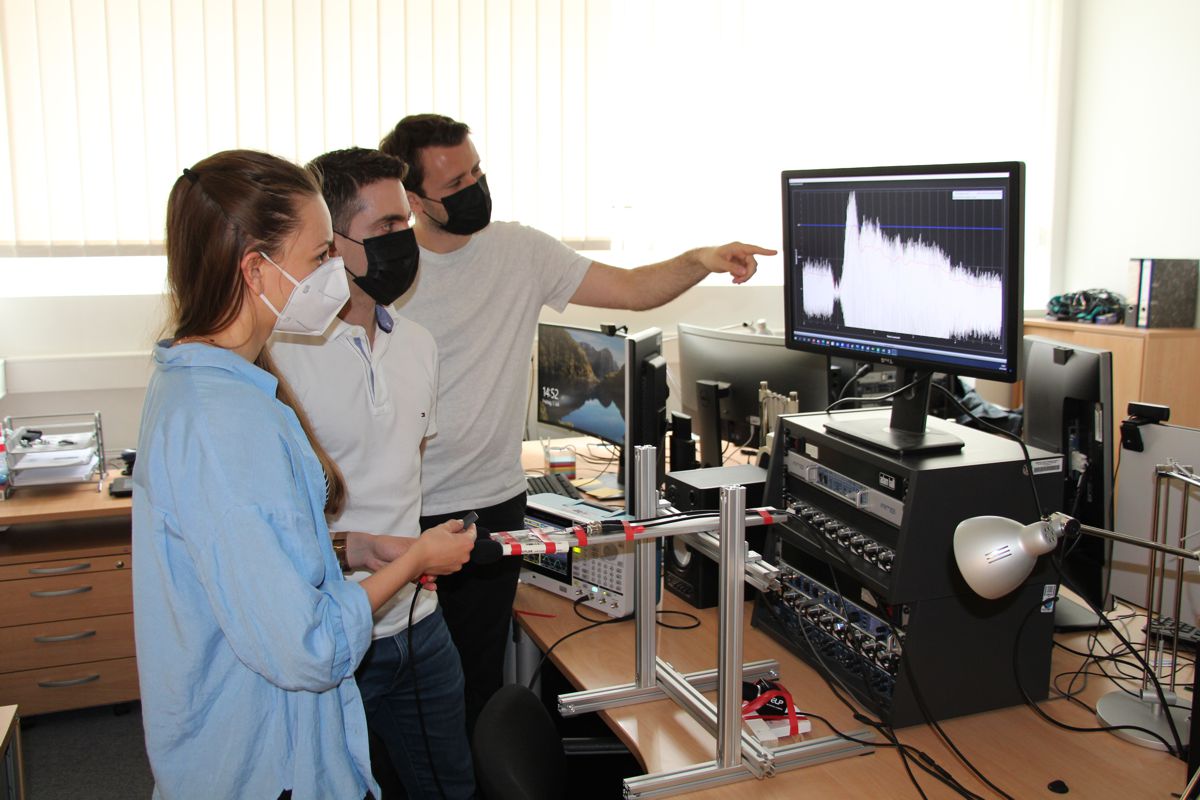 |
|
|---|---|---|
| Karo while testing magnetic sensors and actuators ... | Karo and Johannes with Sebas, our research guest from Colombia ... | |
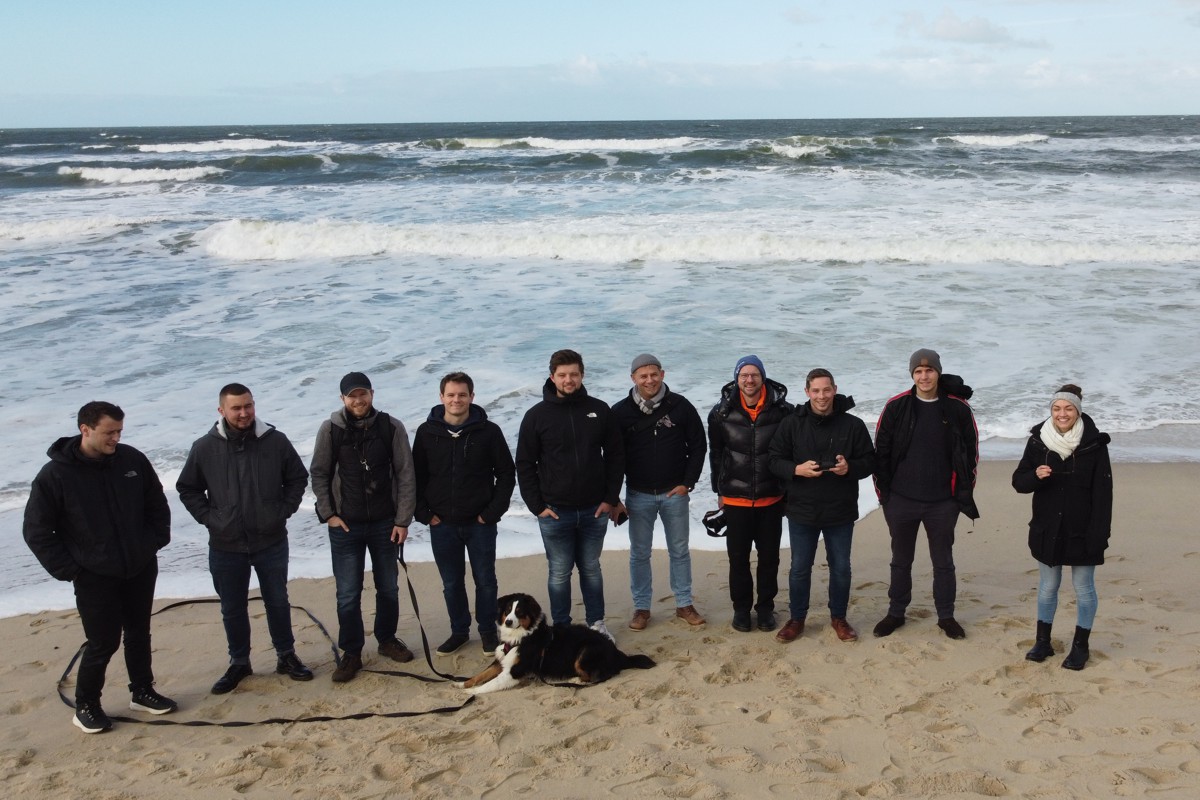 |
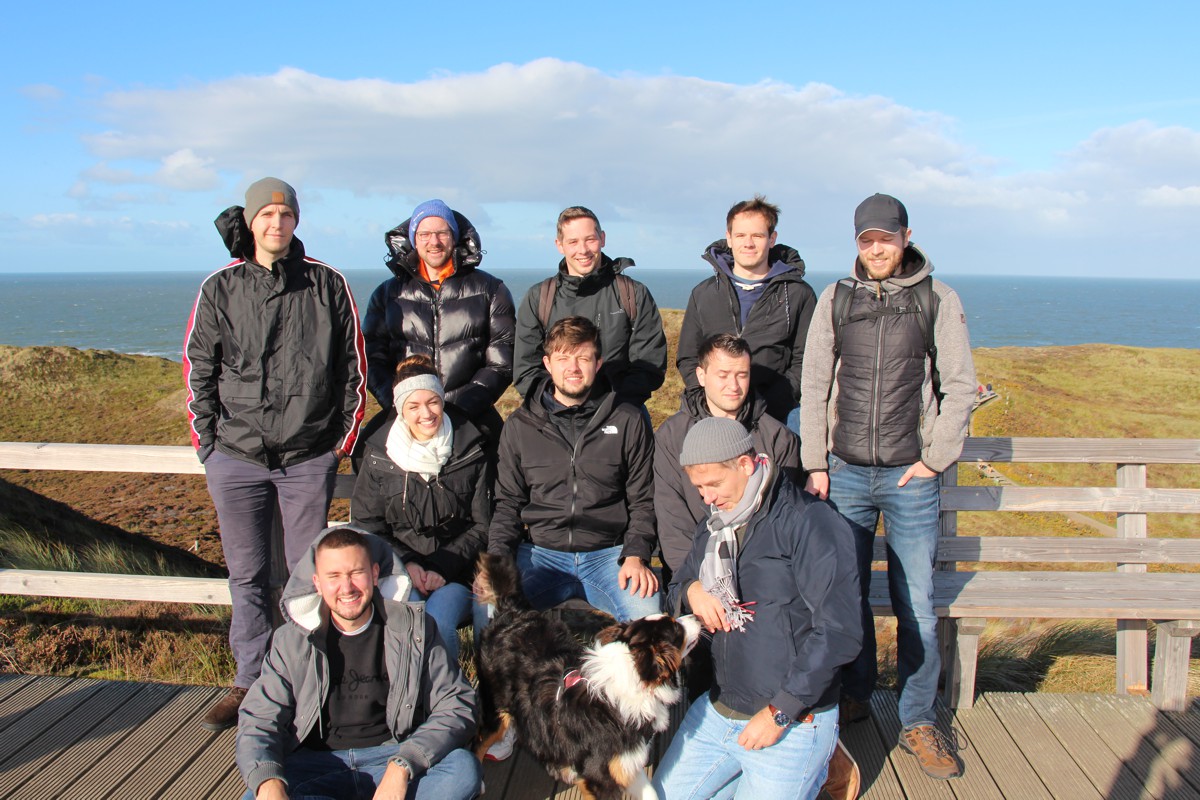 |
|
| Our Sylt trip (drone picture) ... | Our Sylt trip (conventional picture) ... | |
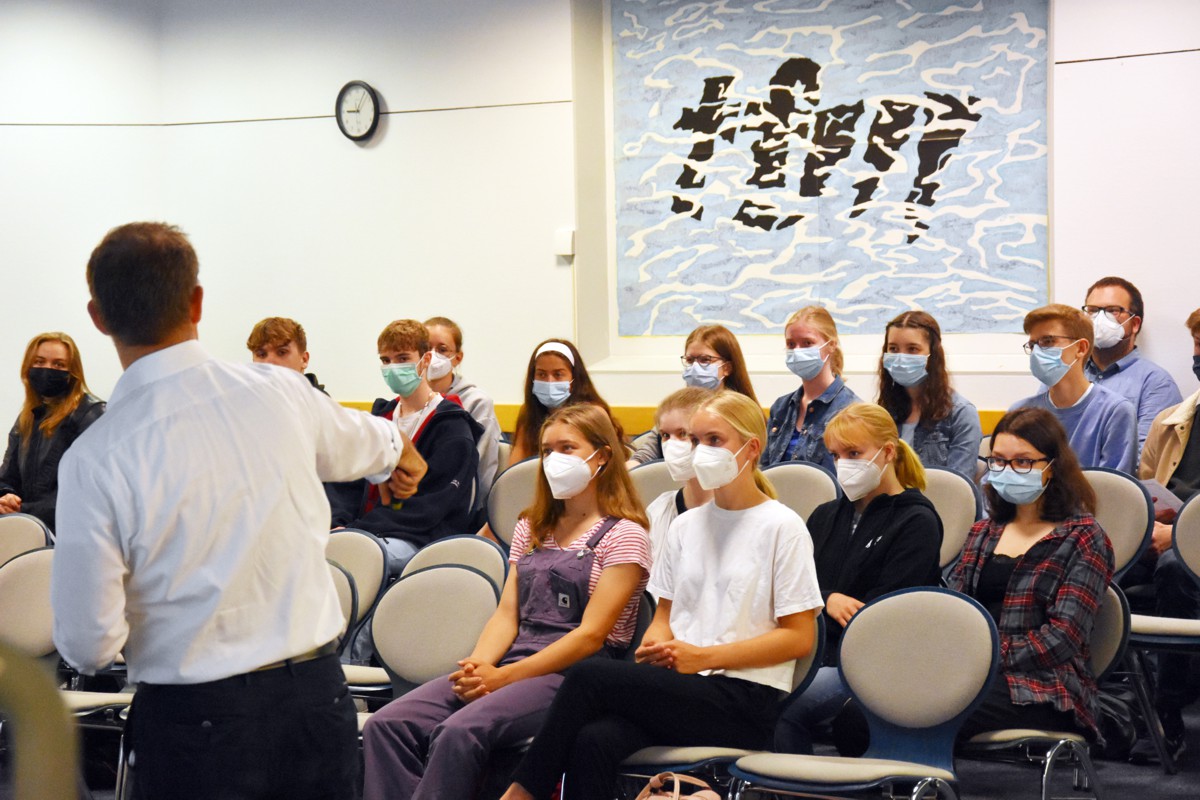 |
 |
|
| Talk for school students during the "Tag der offenen Tür" ... | Michi's PhD defense ... |

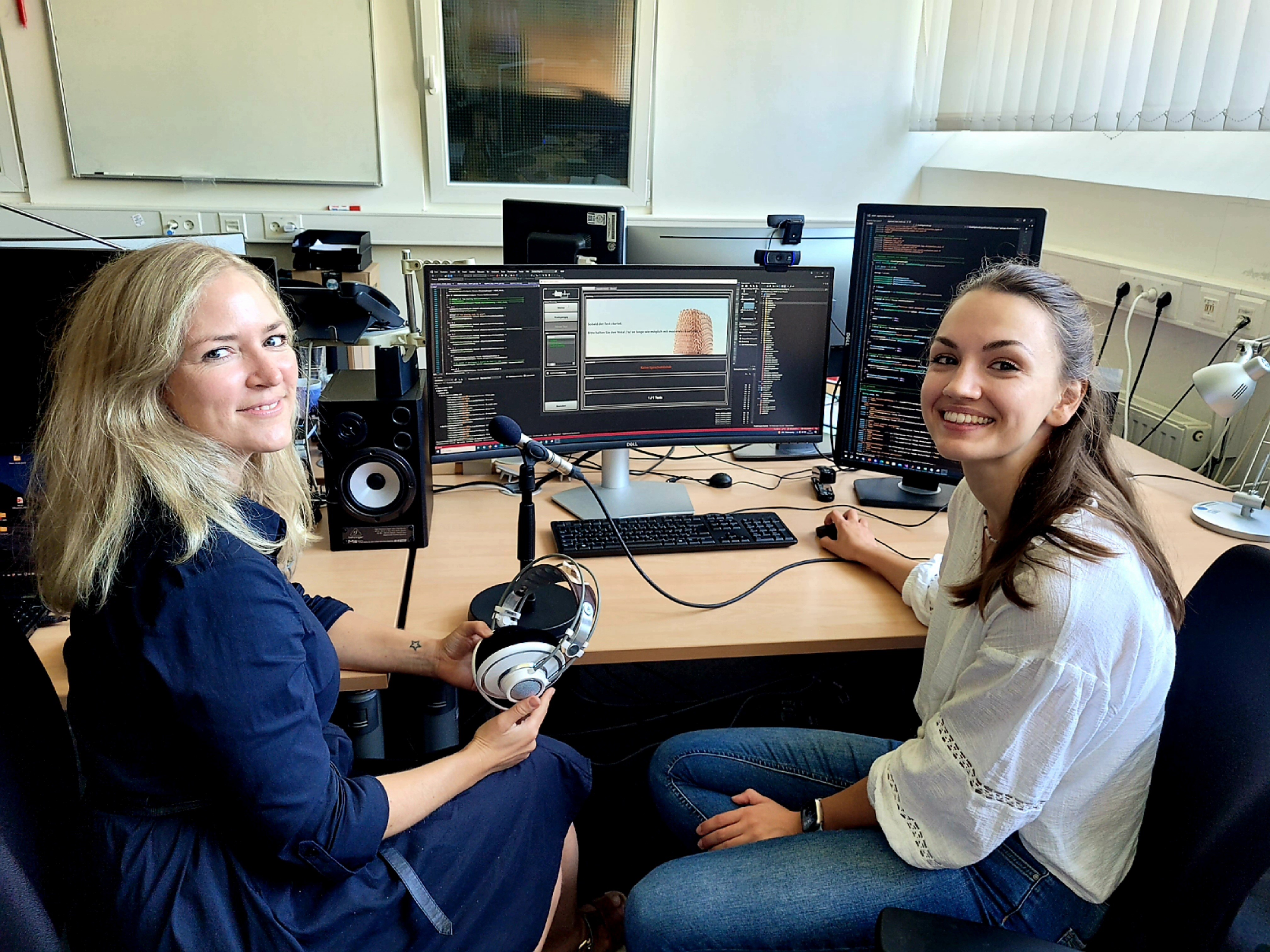 In the first week of September, we were delighted to host Dr.
In the first week of September, we were delighted to host Dr.